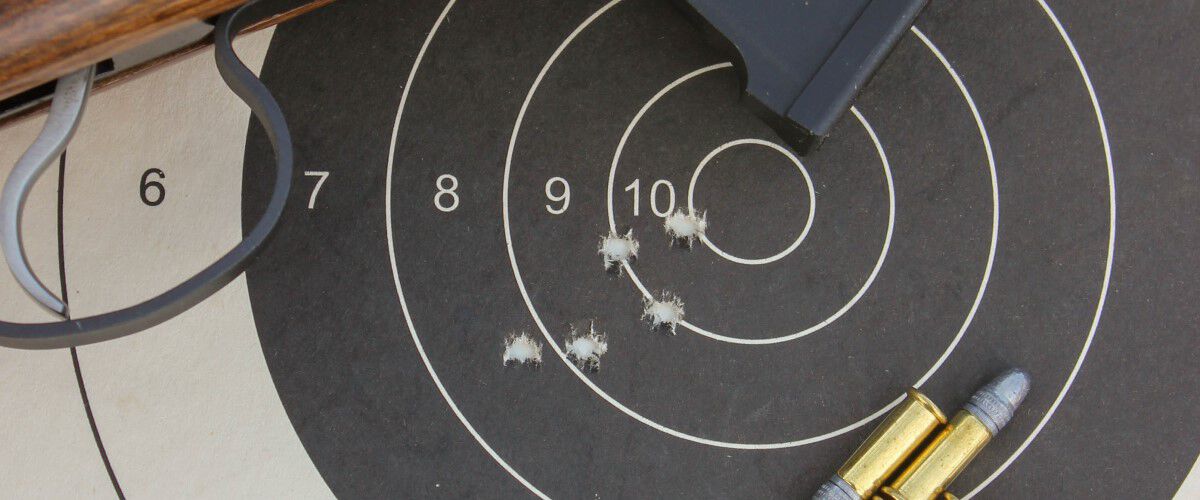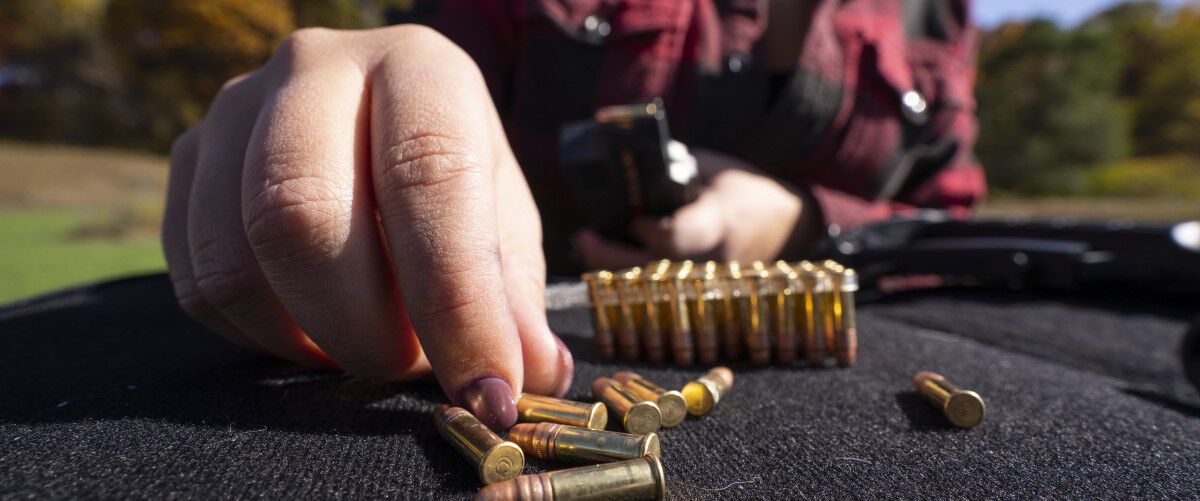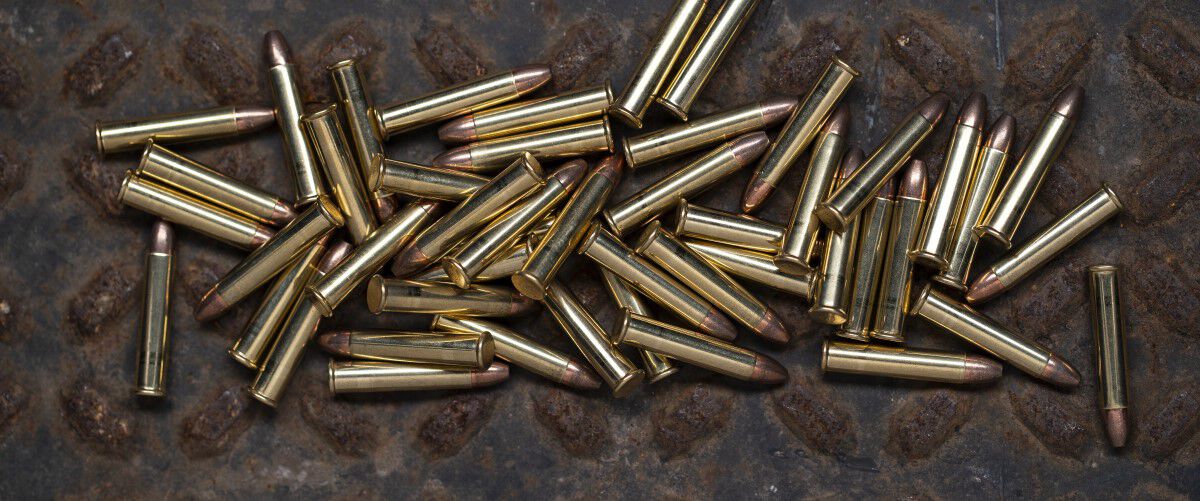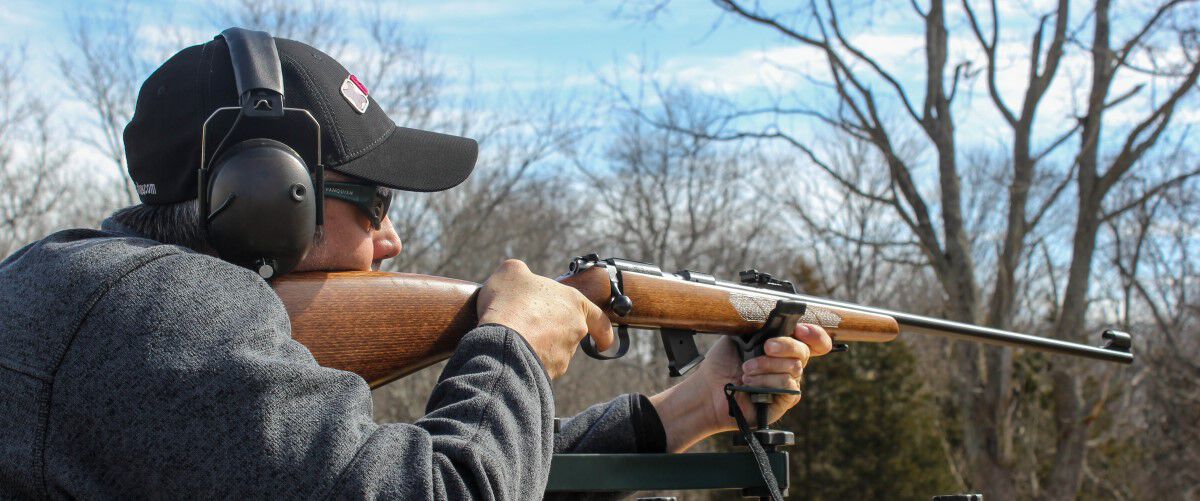Double Deuces
By Brad Fitzpatrick

First released in 1887, the 22 Long Rifle is arguably the world’s most popular cartridge. A great training, plinking, small game and pest control round, it is perfect for new shooters and old hands alike because it’s relatively cheap to shoot and produces mild recoil and muzzle blast. But it’s obviously not the only 22 rimfire: the 22 Winchester Magnum Rimfire, or simply the 22 WMR, was unveiled in 1959 and offers considerably more punch. So, should you buy a 22 LR or 22 WMR? Well, the good news is there are firearms that let you fire both of these rounds from the same gun, and having that option makes a lot of sense.
The 22 LR is loaded in a case that measures .613 inches in length. The 22 WMR utilizes a considerably longer 1.055-inch case, and so these rounds will not fit in the same chamber. They do, however, shoot the same diameter bullet, so guns that allow you to swap out chambers will also let you change between 22 LR and 22 WMR in a matter of minutes.
Combo Guns
Most 22 LR/22 WMR combo guns are revolvers, and changing from one cartridge to another is simply a matter of exchanging a 22 LR cylinder for a 22 WMR cylinder. The process is generally quite simple even for new shooters, and there is a long list of 22 LR/22 WMR guns available, including Ruger’s Single Six Convertible, Taurus Tracker 992 and Heritage Rough Rider. All three come with extra cylinders that can removed or installed based upon whether the shooter wants to fire 22 WMR or 22 LR. Some rifles like Sako’s Quad and CZ’s discontinued 455 let you transition from 22 LR to 22 Mag with just the change of a barrel.
Practical Applications
If you’re trying to decide whether a combo gun is right for you, take a closer look at ballistics to determine just what each of these cartridges can and cannot accomplish. The 22 LR is economical and, with ammo like CCI Quiet-22, it also produces little muzzle blast when you aren’t using a suppressor. If you have a backyard range or routinely dispatch vermin, using low-noise ammunition helps preserve relationships with neighbors. The 22 LR is considerably quieter than 22 WMR, which can be quite loud especially from short-barreled revolvers. In addition, 22 LR is generally more widely available and affordable: CCI Standard Velocity 22 LR costs just $4.99 per 50.

On the other hand 22 LR’s popularity means it’s also the world’s most in-demand round. When times are good, store shelves are filled with 22 LR, but if the ammo demand of the recent past has taught us anything it’s that 22 LR can vanish quickly. Granted, 22 WMR disappears, too, but generally at a slower rate. There have been times when I’ve encountered 22 WMR ammunition available at the same store where lines were forming for 22 LR, and in those instances owning a 22 WMR is certainly advantageous.
Other Benefits
The 22 WMR also offers a sufficient boost in power over the 22 LR. CCI’s Standard Velocity 22 LR ammunition has a muzzle velocity of 1,070 feet per second. That translates to 102 foot-pounds of muzzle energy, which is great for plinking and dispatching small game and vermin at close range. But if you’re chasing quarry that’s larger than a squirrel, 22 WMR offers a substantial advantage. CCI Maxi-Mag HP 40-grain 22 WMR exits the muzzle at 1,875 feet per second and generates about 312 foot-pounds of muzzle energy. At 50 yards the Maxi-Mag carries 220 foot-pounds, which is twice as much as the 22 LR generates at the muzzle. The 22 WMR’s trajectory is also notably flatter. When zeroed at 100 yards the Maxi-Mag is only about 1-inch high at 50 yards. With 22 LR ammunition you’ll need to be zeroed almost 4 inches high at 50 yards to strike a target at 100 yards.

Those improved ballistics also allow the 22 WMR to perform tasks you wouldn’t (or shouldn’t) attempt with a 22 LR. For example, I prefer a 22 WMR for calling gray fox in areas like west Texas. I know fox numbers are high and the animals oftentimes respond to a call within a few seconds. Shots in that mesquite and cactus country are short—almost always less than 100 yards—so big, heavy centerfire guns don’t make a lot of sense (especially if you’re trying to preserve pelts). But rimfires do, and the 22 WMR is, in my opinion, just about perfect for this application. The bullets hit with enough authority at short range to dispatch foxes—something the 22 LR can’t reliably do at 100 yards—but the 22 WMR produces clean kills without blowing up the light-boned foxes and destroying pelts. And you can hunt foxes with a 22 WMR revolver.

There’s also been growing interest in the 22 WMR as a self-defense revolver. I won’t delve into a discussion on whether the 22 WMR is suitable for defense, but I will plainly state that if I had to choose between a 22 LR and 22 WMR for protection, I’d always choose the 22 WMR.
More Options, More Fun
The 22 LR and 22 WMR are both great cartridges everyone should own. But as similar as they are, these two rounds are quite different in terms of performance, application and cost. The good news is that combination guns don’t make you choose one cartridge or the other. Instead, they offer you the best of both worlds. And I like value of getting two guns in one.